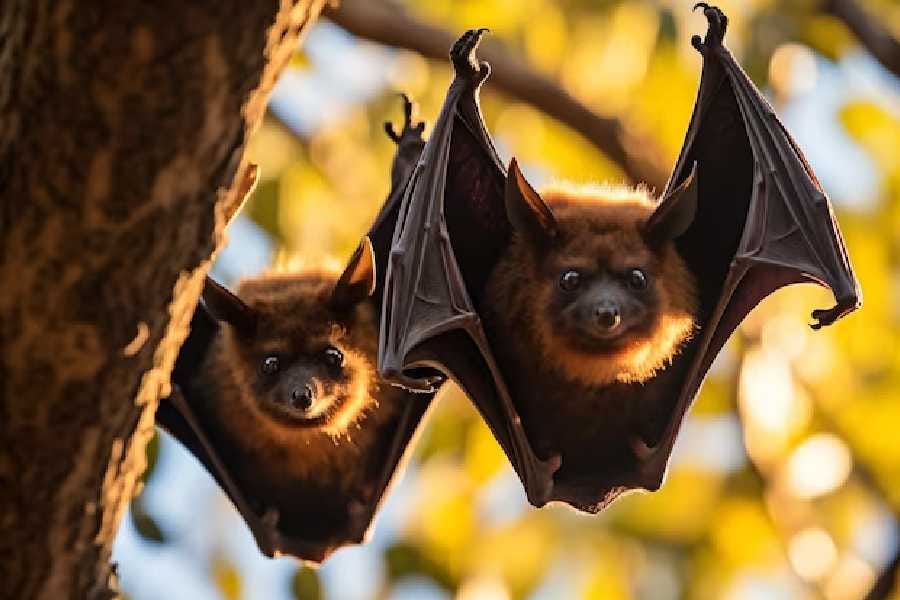The animal kingdom is a vast tapestry woven with the threads of evolution, where survival and reproduction dictate the patterns that emerge. Among these patterns, one of the most intriguing and misunderstood is the concept of sexual size dimorphism (SSD) — the idea that males are predominantly larger than females in most mammal species. This belief, firmly rooted in the annals of scientific thought, has been challenged by recent findings, prompting a reevaluation of our understanding of the natural world.
At the heart of natural selection lies the imperative of passing genes to the next generation, with certain characteristics, such as size, playing a pivotal role in an animal’s survival and reproductive success. A larger size may afford an animal a stronger bite or access to new food sources, thus offering a survival advantage. However, survival is just one part of the evolutionary equation. Sexual selection, reflecting the competition among males and females to reproduce, plays a crucial role, particularly in mammals. The conventional wisdom has posited that larger males, exemplified by deer and elephant seals, are more successful in reproductive battles due to their dominance.
This narrative of male superiority in size has been perpetuated by the focus on large, charismatic animals in studies of sexual size differences, leaving smaller mammals such as rodents and bats — which constitute more than half of all mammal species — less researched. However, the sparse research that does exist paints a different picture, revealing that in many small mammals, the sexes are similarly sized, and in some cases, females are larger. This challenges the broader narrative and begs the question: Is the belief that males are generally larger than females justified?
Charles Darwin, in ‘The Descent of Man,’ asserted that males are larger than females in most mammal species, a statement that, despite lacking empirical evidence, has dominated scientific thought. Yet, a groundbreaking analysis of 429 mammalian species has revealed that Darwin’s assumption may not hold water. The study, published in Nature Communications, found that only 45 percent of the species feature larger males, while nearly an equal number have sexes of similar size, and in 16 percent of the cases, females are larger.

The study’s lead author, Kaia Tombak, embarked on this research journey after an online seminar debate on male and female aggressiveness in species with similarly sized sexes. What began as a search for answers to one question led to an exploration of the prevalence of sexual size monomorphism. This nearly three-year-long ‘COVID passion project’ involved a thorough literature review and statistical analysis, challenging the larger male narrative that has persisted for over a century, possibly reflecting Western societal biases.
Tombak’s findings not only confront Darwin’s long-held view but also suggest that the narrative may have been influenced by a focus on more charismatic species, overlooking the diversity of mammalian life. The research corrected for this bias by sampling a broad range of mammals, from bats to rodents, revealing that the pattern of larger males is not as common as previously believed. This discovery raises questions about the factors influencing sexual size differences and the role of female size in reproductive success, a topic that Katherine Ralls explored in the 1970s with her ‘big mother’ hypothesis.
The questioning and reevaluation of prevailing assumptions about sex differences signify a ‘female turn’ in scientific inquiry, challenging stereotypes and highlighting the diversity of reproductive strategies beyond physical competition among males. This study not only sheds light on the complex dynamics of sexual selection but also underscores the importance of female biology in understanding evolutionary processes.
The fabric of the animal kingdom is more intricate and varied than the threads of traditional thought have woven. The findings presented by Kaia Tombak and her colleagues unravel the myth of universal male dominance in size, revealing a spectrum of sexual size differences across mammal species. This reshaping of our understanding invites us to look beyond the surface, to explore the diverse strategies that animals employ in the dance of survival and reproduction. As we delve deeper into the mysteries of the natural world, we are reminded of the ever-changing nature of science and the importance of challenging assumptions to uncover the true tapestry of life.
Related posts:
Males Aren’t Larger Than Females in Most Mammalian Species
Sorry, Darwin: Most male mammals aren’t bigger than females
Male mammals aren’t always bigger than females





